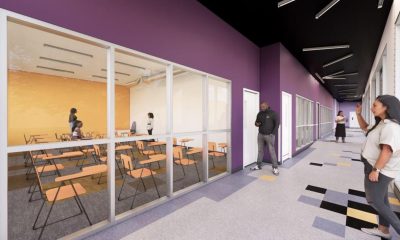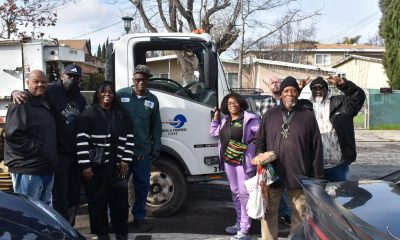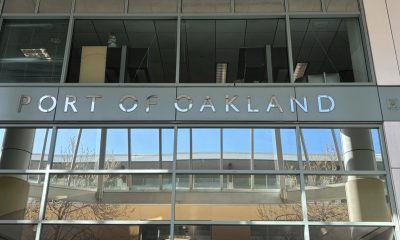#NNPA BlackPress
COLUMN: Juxtaposition: Kamala Harris’s ‘Everytown’ Speech and the Racial Dynamics of Gun Violence
CHICAGO DEFENDER — Gun violence overwhelmingly hurts communities of color due to a lack of investment coupled with weak gun laws. To combat this issue, U.S. policymakers should pair common-sense gun legislation with investments in community-based violence intervention and policies addressing the root causes of gun violence.
The post COLUMN: Juxtaposition: Kamala Harris’s ‘Everytown’ Speech and the Racial Dynamics of Gun Violence first appeared on BlackPressUSA.
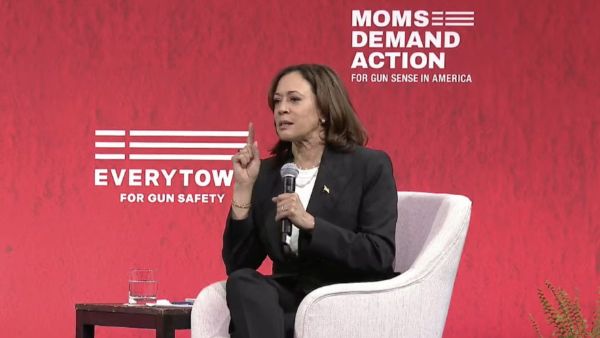
Columnist A. Toussaint Werner weighs in on the Vice President’s recent appearance at the “Everytown for Gun Safety” conference in Chicago
Last Friday, Vice President Kamala Harris made her way to Chicago, taking the stage at McCormick Place to address the “Everytown for Gun Safety” conference. This event brought together a sea of predominantly white women wearing red “Everytown moms against gun violence” T-shirts, creating a stark visual contrast that left me pondering the meaning of juxtaposition.
Everytown for Gun Safety, as described on its website, boasts nearly 10 million members dedicated to ending gun violence. It’s a noble cause I was largely ignorant of until that moment. As I entered the convention center, I couldn’t help but notice the palpable energy in the crowd, akin to an all-girls first-year class awaiting a pep rally. Vendors lined the back wall, focusing on various aspects of gun safety and violence prevention, but the absence of diversity was conspicuous.
This stark lack of racial representation led me to reflect on the term “juxtaposition.” While gun violence is pervasive in America, it disproportionately plagues Black communities.
Chicago, where the conference took place, has often been portrayed in the media as ground zero for gun violence, and these issues have frequently been framed along racial lines. Yet, inside McCormick Place, the attendees did not mirror the grim realities just beyond its doors, where victims and perpetrators of gun crimes reside.
As Grey’s Anatomy actor Jason Winston George and an Everytown executive introduced Vice President Harris to an enthusiastic crowd, it became evident that this event was as much about optics as it was about substance. The first order of business was orchestrating a photo opportunity with the Vice President and the crowd.
It’s hard to recall a recent local or national election that didn’t exploit the narrative of Chicago’s violence to signal what should be done for or against gun safety. Depending on your political alignment, Chicago becomes a poster child to advocate for more significant gun restrictions or assert the need for personal firearm ownership. Both arguments are valid, but only within the context of the racial biases that shape gun legislation.
Vice President Harris, unsurprisingly, leaned toward advocating for stricter gun control. Softball questions from George set her up to deliver the expected response: “Just vote for us.”
The Racial Disparities of the Gun Violence Issue
The event’s pageantry and showmanship were impressive, but my disappointment stemmed from the need for more substantive discourse.
It appears that depth of thought has become antiquated in American politics. Politicians understand that nuanced ideas rarely win elections. Instead, they appeal to our primitive instincts, making emotional appeals to elicit responses. The juxtaposition of a crowd of white women advocating for stricter gun laws while the issue disproportionately affects Black and Brown communities was thought-provoking.
Gun violence overwhelmingly hurts communities of color due to a lack of investment coupled with weak gun laws. To combat this issue, U.S. policymakers should pair common-sense gun legislation with investments in community-based violence intervention and policies addressing the root causes of gun violence.
The statistics are telling:
- Young Black Americans experience the highest rates of gun homicides.
- Black Americans are ten times more likely than white Americans to die by gun homicide, with Black men being eighteen times more at risk.
- In 2020, 61 percent of all gun homicides were of Black Americans, who comprise just 12.5 percent of the population.
These facts illustrate the stark racial disparities at the heart of the gun violence problem.
What often remains unspoken is the profit-driven nature of a racist system. Policymakers should confront discriminatory policies in policing, housing, education and employment to tackle the root causes of gun violence.
However, this is unlikely to happen because many profit from the status quo. Prisons, funeral homes and even the police benefit from the current state of affairs.
A quick glance at Everytown’s annual budget of $14 million and its 300 employees reveals that even organizations ostensibly dedicated to addressing gun violence can become part of a system perpetuating racial disparities.
As the 2024 presidential election draws nearer, I’m acutely aware of the pervasive impact of gun violence, particularly within my community. I attended this event hoping to hear concrete solutions.
My expectations were modest: I wanted an honest evaluation of the problem. Regrettably, I departed without either. As the crowd erupted in applause when the Vice President concluded her speech, I questioned whether my disappointment was unique to me. Could I bear some unconscious biases, or did I inadvertently overlook a crucial aspect of the discussion?
As I left the convention and headed to a nearby barbershop, I talked with the barber, mentioning that I had just attended Kamala Harris’s speech. His response, “Who’s Kamala Harris?” – a poignant juxtaposition indeed.
The opinions expressed in this column are that of the writer and do not necessarily reflect those of the Chicago Defender.
The post COLUMN: Juxtaposition: Kamala Harris’s ‘Everytown’ Speech and the Racial Dynamics of Gun Violence appeared first on Chicago Defender.
The post COLUMN: Juxtaposition: Kamala Harris’s ‘Everytown’ Speech and the Racial Dynamics of Gun Violence first appeared on BlackPressUSA.
#NNPA BlackPress
IN MEMORIAM: Ramona Edelin, Influential Activist and Education Advocate, Dies at 78
NNPA NEWSWIRE — Born on September 4, 1945, in Los Angeles, California, activist Ramona Edelin’s early years were marked by a commitment to education and social justice. According to her HistoryMakers biography, after graduating from Fisk University with a Bachelor’s degree in 1967, she pursued further studies at the University of East Anglia in England. She earned her master’s degree before completing her Ph.D. at Boston University in 1981.
The post IN MEMORIAM: Ramona Edelin, Influential Activist and Education Advocate, Dies at 78 first appeared on BlackPressUSA.

By Stacy M. Brown, NNPA Newswire Senior National Correspondent
@StacyBrownMedia
Once upon a time, Black Americans were simply known as colored people, or Negroes. That is until Ramona Edelin came along. The activist, renowned for her pivotal roles in advancing civil rights, education reform, and community empowerment, died at her D.C. residence last month at the age of 78. Her death, finally confirmed this week by Barnaby Towns, a communications strategist who collaborated with Dr. Edelin, was attributed to cancer.
Born on September 4, 1945, in Los Angeles, California, Edelin’s early years were marked by a commitment to education and social justice. According to her HistoryMakers biography, after graduating from Fisk University with a Bachelor’s degree in 1967, she pursued further studies at the University of East Anglia in England. She earned her master’s degree before completing her Ph.D. at Boston University in 1981.
Edelin’s contributions to academia and activism were manifold. She was pivotal in popularizing the term “African American” alongside Rev. Jesse L. Jackson in the late 1980s.
Jackson had announced the preference for “African American,” speaking for summit organizers that included Dr. Edelin. “Just as we were called Colored, but were not that, and then Negro, but not that, to be called Black is just as baseless,” he said, adding that “African American” “has cultural integrity” and “puts us in our proper historical context.”
Later, Edelin told Ebony magazine, “Calling ourselves African Americans is the first step in the cultural offensive,” while linking the name change to a “cultural renaissance” in which Black Americans reconnected with their history and heritage.
“Who are we if we don’t acknowledge our motherland?” she asked later. “When a child in a ghetto calls himself African American, immediately he’s international. You’ve taken him from the ghetto and put him on the globe.”
The HistoryMakers bio noted that Edelin’s academic pursuits led her to found and chair the Department of African American Studies at Northeastern University, where she established herself as a leading voice.
Transitioning from academia to advocacy, Edelin joined the National Urban Coalition in 1977, eventually ascending to president and CEO. During her tenure, she spearheaded initiatives such as the “Say Yes to a Youngster’s Future” program, which provided crucial support in math, science, and technology to youth and teachers of color in urban areas. Her biography noted that Edelin’s efforts extended nationwide through partnerships with organizations like the National Science Foundation and the United States Department of Education.
President Bill Clinton recognized Edelin’s expertise by appointing her to the Presidential Board on Historically Black Colleges and Universities in 1998. She also co-founded and served as treasurer of the Black Leadership Forum, solidifying her standing as a respected leader in African American communities.
Beyond her professional achievements, Edelin dedicated herself to numerous boards and committees, including chairing the District of Columbia Educational Goals 2000 Panel and contributing to the Federal Advisory Committee for the Black Community Crusade for Children.
Throughout her life, Edelin received widespread recognition for her contributions. Ebony magazine honored her as one of the 100 Most Influential Black Americans, and she received prestigious awards such as the Southern Christian Leadership Award for Progressive Leadership and the IBM Community Executive Program Award.
The post IN MEMORIAM: Ramona Edelin, Influential Activist and Education Advocate, Dies at 78 first appeared on BlackPressUSA.
#NNPA BlackPress
Tennessee State University Board Disbanded by MAGA Loyalists as Assault on DE&I Continues
NNPA NEWSWIRE — Recent legislative actions in Tennessee, such as repealing police reform measures enacted after the killing of Tyre Nichols, underscore a troubling trend of undermining local control and perpetuating racist agendas. The new law preventing local governments from restricting police officers’ authority disregards community efforts to address systemic issues of police violence and racial profiling.
The post Tennessee State University Board Disbanded by MAGA Loyalists as Assault on DE&I Continues first appeared on BlackPressUSA.
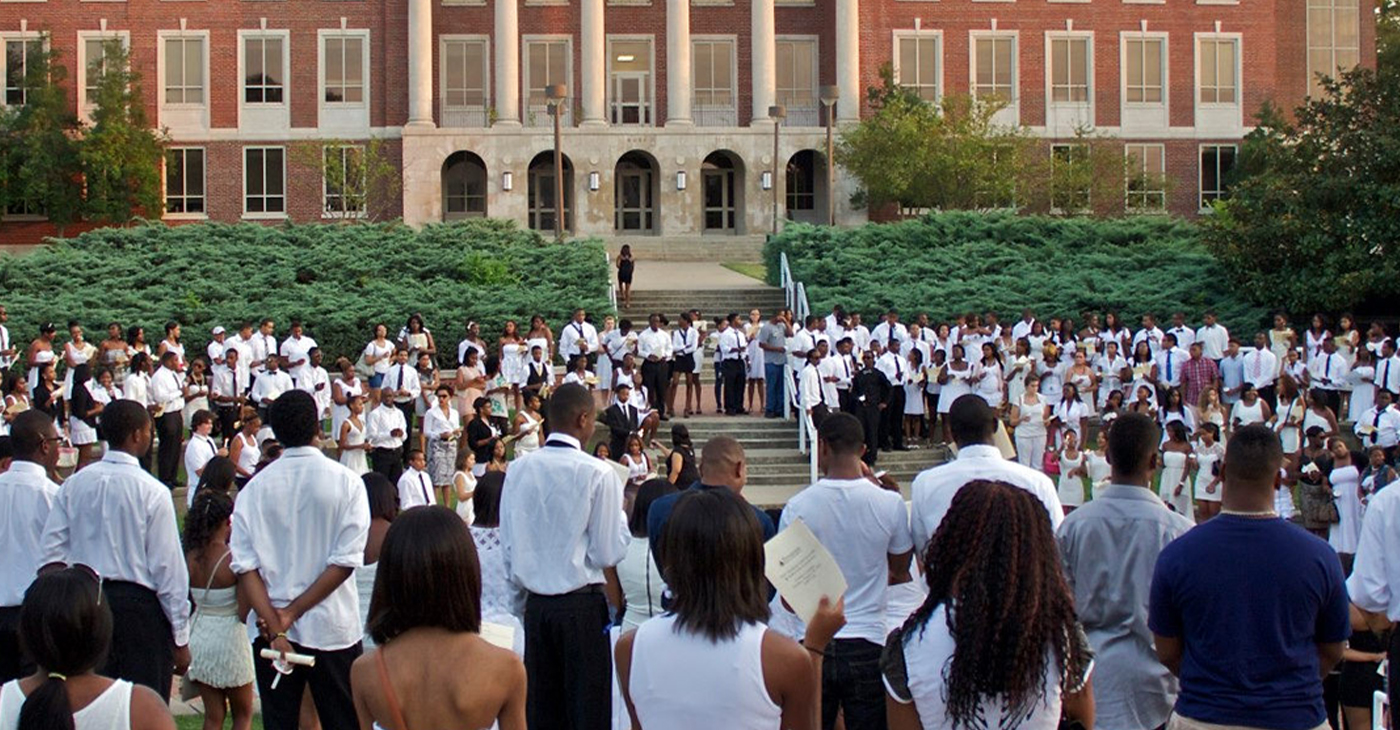
By Stacy M. Brown, NNPA Newswire Senior National Correspondent
@StacyBrownMedia
Tennessee State University (TSU), the state’s only public historically Black college and university (HBCU), faces a tumultuous future as Gov. Bill Lee dissolved its board, a move supported by racist conservatives and MAGA Republicans in the Tennessee General Assembly, who follow the lead of the twice-impeached, four-times indicted, alleged sexual predator former President Donald Trump. Educators and others have denounced the move as an attack on diversity, equity, and inclusion (DE&I) and a grave setback for higher education.
Critics argue that TSU’s purported financial mismanagement is a manufactured crisis rooted in decades of underinvestment by the state government. They’ve noted that it continues a trend by conservatives and the racist MAGA movement to eliminate opportunities for Blacks in education, corporate America, and the public sector.
Gevin Reynolds, a former speechwriter for Vice President Kamala Harris, emphasizes in an op-ed that TSU’s financial difficulties are not the result of university leadership because a recent audit found no evidence of fraud or malfeasance.
Reynolds noted that the disbanding of TSU’s board is not an isolated incident but part of a broader assault on DE&I initiatives nationwide. Ten states, including Tennessee, have enacted laws banning DE&I policies on college campuses, while governors appointing MAGA loyalists to university trustee positions further undermine efforts to promote inclusivity and equality.
Moreover, recent legislative actions in Tennessee, such as repealing police reform measures enacted after the killing of Tyre Nichols, underscore a troubling trend of undermining local control and perpetuating racist agendas. The new law preventing local governments from restricting police officers’ authority disregards community efforts to address systemic issues of police violence and racial profiling.
The actions echo historical efforts to suppress Black progress, reminiscent of the violent backlash against gains made during the Reconstruction era. President Joe Biden warned during an appearance in New York last month that Trump desires to bring the nation back to the 18th and 19th centuries – in other words, to see, among other things, African Americans back in the chains of slavery, women subservient to men without any say over their bodies, and all voting rights restricted to white men.
The parallels are stark, with white supremacist ideologies used to justify attacks on Black institutions and disenfranchise marginalized communities, Reynolds argued.
In response to these challenges, advocates stress the urgency of collective action to defend democracy and combat systemic racism. Understanding that attacks on institutions like TSU are symptomatic of broader threats to democratic norms, they call for increased civic engagement and voting at all levels of government.
The actions of people dedicated to upholding the principles of inclusivity, equity, and justice for all will determine the outcome of the ongoing fight for democracy, Reynolds noted. “We are in a war for our democracy, one whose outcome will be determined by every line on every ballot at every precinct,” he stated.
The post Tennessee State University Board Disbanded by MAGA Loyalists as Assault on DE&I Continues first appeared on BlackPressUSA.
#NNPA BlackPress
Braxton Haulcy and the Expansion of Walker|West Music Academy
May 24, 2023 – Walker West Music Academy gets an early start on expansion. Join us for a Wednesday episode of The …
The post Braxton Haulcy and the Expansion of Walker|West Music Academy first appeared on BlackPressUSA.
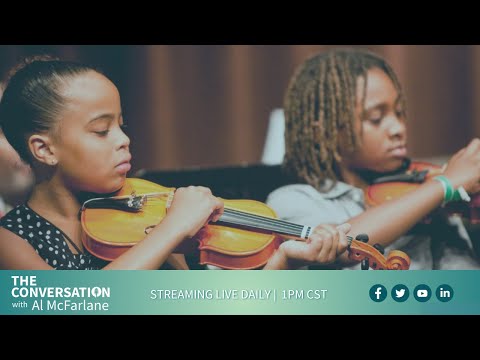
May 24, 2023 – Walker West Music Academy gets an early start on expansion. Join us for a Wednesday episode of The …
The post Braxton Haulcy and the Expansion of Walker|West Music Academy first appeared on BlackPressUSA.
-

 Activism4 weeks ago
Activism4 weeks agoOakland Post: Week of March 27 – April 2, 2024
-

 #NNPA BlackPress4 weeks ago
#NNPA BlackPress4 weeks agoBeloved Actor and Activist Louis Cameron Gossett Jr. Dies at 87
-

 Community1 week ago
Community1 week agoFinancial Assistance Bill for Descendants of Enslaved Persons to Help Them Purchase, Own, or Maintain a Home
-

 Activism3 weeks ago
Activism3 weeks agoOakland Post: Week of April 3 – 6, 2024
-

 Business1 week ago
Business1 week agoV.P. Kamala Harris: Americans With Criminal Records Will Soon Be Eligible for SBA Loans
-

 Activism2 weeks ago
Activism2 weeks agoOakland Post: Week of April 10 – 16, 2024
-

 Community1 week ago
Community1 week agoAG Bonta Says Oakland School Leaders Should Comply with State Laws to Avoid ‘Disparate Harm’ When Closing or Merging Schools
-

 Community6 days ago
Community6 days agoOakland WNBA Player to be Inducted Into Hall of Fame

